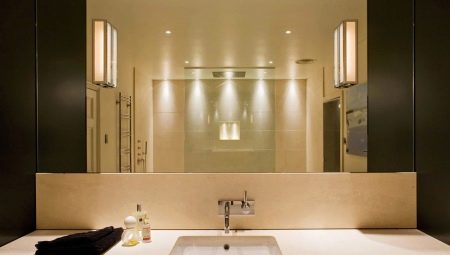A few years ago it was believed that sconces in the bathroom were inappropriate. It was believed that the central lamp was quite enough for lighting. Today, sconces are regaining their position in the interior design of the bathroom. In this article we will consider their advantages and disadvantages, types, dwell on the nuances of choosing the best model.
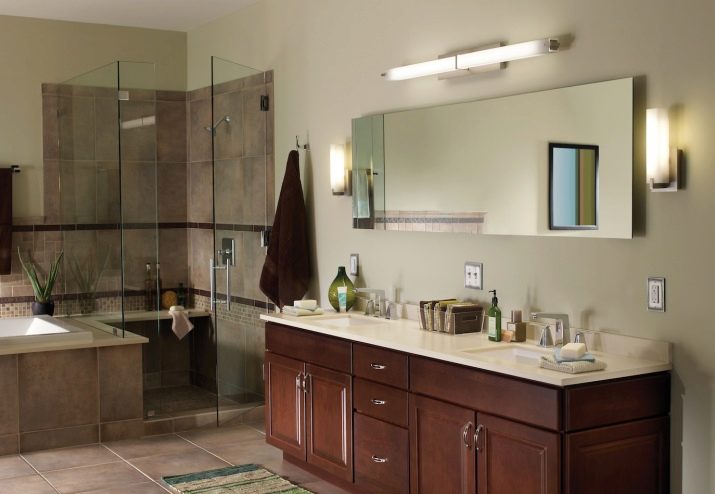
Primary requirements
Bathroom Lighting must comply with a number of requirements. Since they will be in a humid room, they should be waterproof. In comparison with conventional analogues, they are equipped with additional elements that protect the cartridge, terminals, and also the electronic unit from moisture. Lamps must have a certain security index, which indicates the degree of protection against ingress of liquid and dust particles.
The larger the number indicated, the better the protection, for example:
- 0 speaks of lack of protection;
- 1 - protection against vertically falling drops;
- 2 - protection against drops falling at an angle of 15 degrees;
- 3 - protection against drops falling at an angle of 60 degrees;
- 4 - the device is protected from splashes;
- 5 - the model is not afraid of a water stream;
- 6 - the product is most reliably protected from water jets.
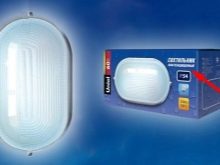
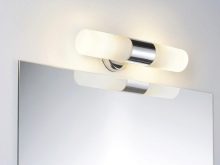
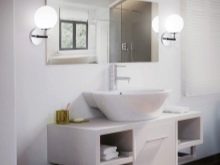
A correctly selected lighting device will not blink, turn on after one time and quickly burn out. Products purchased for the design of bathrooms should fully compensate for the lack of lighting that is typical for rooms without windows.
They are subject to increased requirements for safety, durability and efficiency. They must not be hung inside showers and directly above the bathroom.
Sconces are designed for use in "dry" areas of a plumbing unit. If they are bought in small bathrooms, make sure that they are not in a place where they can get water jets, splashes, steam. Lighting devices are purchased for installation at the "correct" height. They should illuminate a specific functional area and facilitate shaving or makeup.
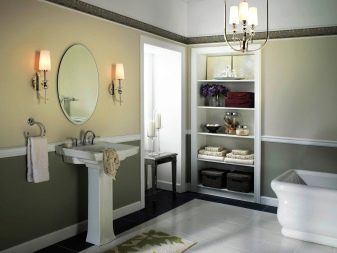
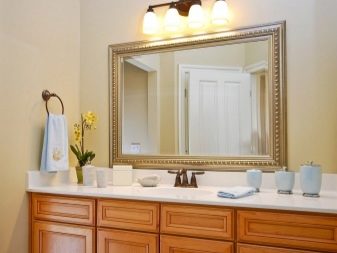

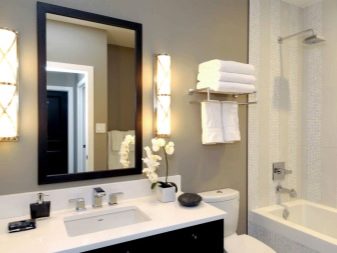
In addition to moisture protection, sconces on the bathroom wall should be resistant to deformation when the temperature drops. Their body should be airtight, and the brightness should be optimal, moderately intense and even. In addition, the materials of their manufacture must be resistant to corrosion.
Advantages and disadvantages
Moisture-proof sconces for the bathroom have a number of advantages, for example, they:
- protrude above the surface of the wall, due to which in small rooms they can be used as main lighting;
- compact and functional, do not take up much space, therefore they can be used in a bathroom of any size;
- allow to organize local illumination of a specific functional area;
- differ in design variability and may hint at belonging to a certain interior style;
- do not depend on the height of the walls, suitable for installation in rooms with low and high ceilings;
- decorate the interior composition, give it completeness, participate in the zoning of the interior;
- depending on the model, they are able to illuminate a large amount of space, which is not available in spot lighting;
- differ in a wide range of shapes and sizes, suitable for large and small bathrooms;
- not limited in color solutions, which simplifies the choice for a specific background decoration of the interior;
- differ in different price categories - in the assortment of stores there are products that can satisfy a buyer with different budget options.
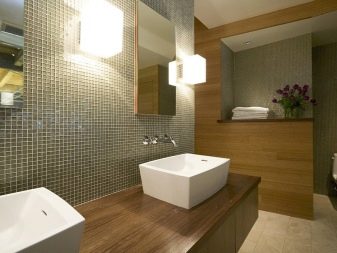
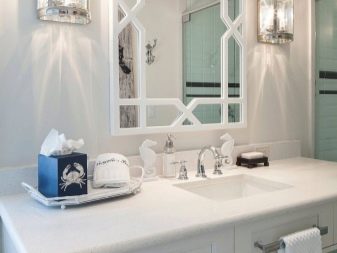
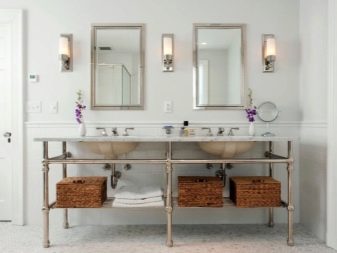
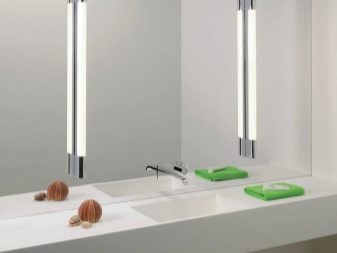
Along with the advantages, the sconce for the bathroom has several disadvantages:
- they need hidden wiring, which complicates their installation;
- varieties with a high moisture resistance index are not always aesthetically attractive;
- can not always be installed where design requires it.
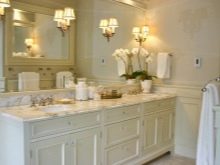

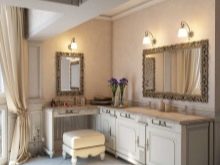
Kinds
There are two signs to classify moisture-proof sconces on the bathroom wall. According to the type of lampshade, three types of models are distinguished.
- With diffused light (general lighting options) having a light flux angle of 360 degrees.
- With directional light (products for lighting local areas of the bathroom), characterized by the shape of the lampshade, which sets the direction of the light stream.
- Swivel type (with a system for adjusting the direction of the light flux). These are modifications for those who are not satisfied with a stationary type sconce.
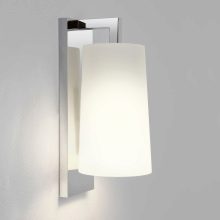

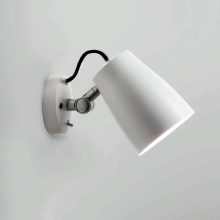
By the type of arrangement, the sconces are horizontal and vertical. Variants of the first type are installed above or below some object for local lighting. Modifications of the second type are the same wall lights.
Their difference is the type of shade open from above.
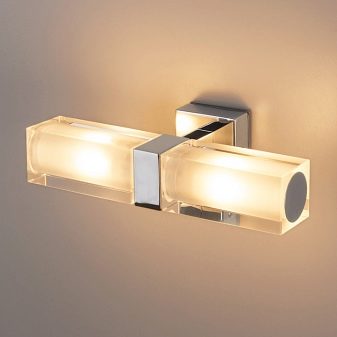
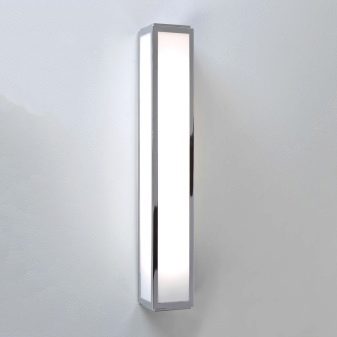
Materials
In the production of sconces, different raw materials are used. Depending on the style of the interior, products can be made from wood, metal, crystal. Sometimes used in production ceramics, colored and clear glass, as well as semiprecious stones.
Often the material of manufacture is durable plastic. It is characterized by inertness to moisture, moisture, does not decompose and does not deform under the influence of a temperature difference. At the same time, plastic can perfectly imitate any texture (wood, stone, glass, marble, metal).
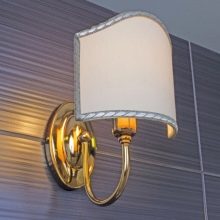
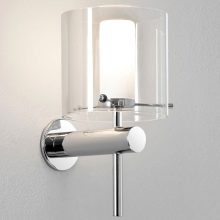
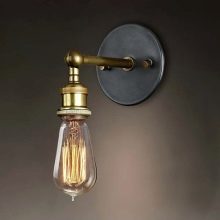
Design
The design of the sconces purchased for the arrangement of the bathroom can be very diverse. Traditional models are paired products with the same design. In addition, on sale you can find products with several shades mounted on one bracket. The type of plafonds can be different (for example, in the form of a ball, bell, cylinder, floor lamp).
Let's consider different design options.
- Models for embodiment classic style remind palace lamps. They are decorated with gilding, their shades are floor lamps or candlesticks, and the fittings are made for openwork forging.
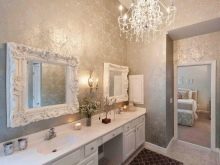
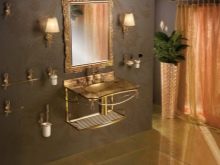

- Antique style gives away its specificity. These sconces are concise and massive, but not without their zest. Depending on the design, they can be decorated with a floral print, ceramic elements.

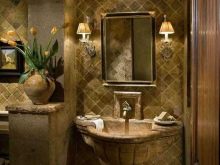
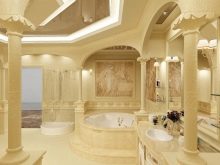
- Baroque sconces look sophisticated and elegant. They abound in the number of decorative elements, made in bright colors, often surprise with the shape and design of the ceiling.
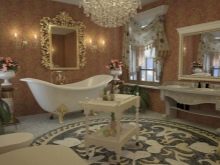


- Modern with apparent simplicity, it is distinguished by elegance. The sconces are made of plastic; they are distinguished by the presence of chrome finish and the light color of the shades. They can be horizontal and vertical.
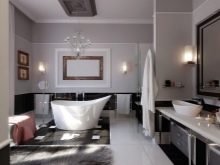
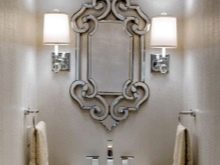
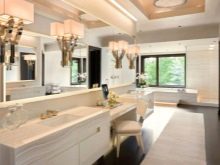
- Country and Provence characterized by a craving for rustic simplicity along with sophistication of design. The priority is matte textures and textiles, you can buy a sconce with floor lamps decorated with a medium print.
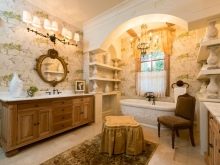
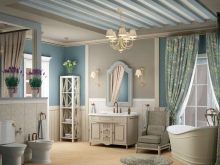

- Pop Art stands out for its brightness and originality of design. These are unusual forms of shades, the use of pure colors, stylization to the shape of animals or people.
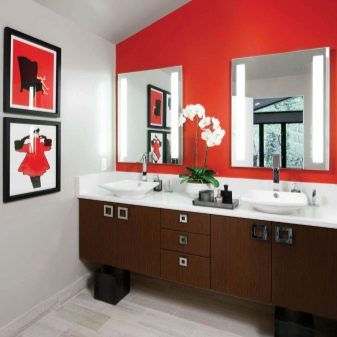
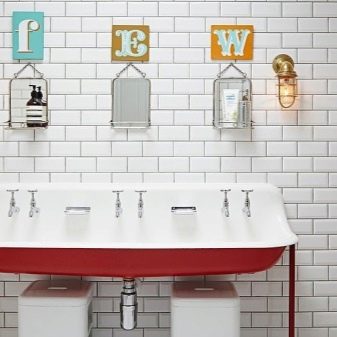
Color schemes
The color palette of a sconce for a bathroom is very extensive. It is not difficult to buy models in a related color to one of the accessories of a particular interior. On the shelves you can find products with white, light, transparent, bright and even dark shades. Finish can be gilded, bronze, copper, silver, chrome.
However, with all the wealth of choice, it is better to take lamps with light shades: they give more light.
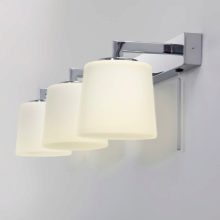
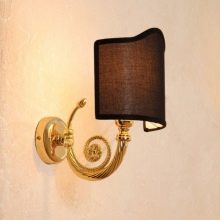

Accommodation options
The location of the sconce in the bathroom depends on various factors: features of the layout, the place for lighting, the type of backlight (local or general). In addition, the type of directivity of the light flux matters.
It is necessary to arrange the sconce so that the light does not hit the eyes. Most often wall lights mount on either side of the mirror. At the same time, paired fixtures are used in the design to create a symmetrical composition. The disadvantage of this placement is the inability to install one lighting device: shadows appear with it, which interfere with shaving or applying makeup.
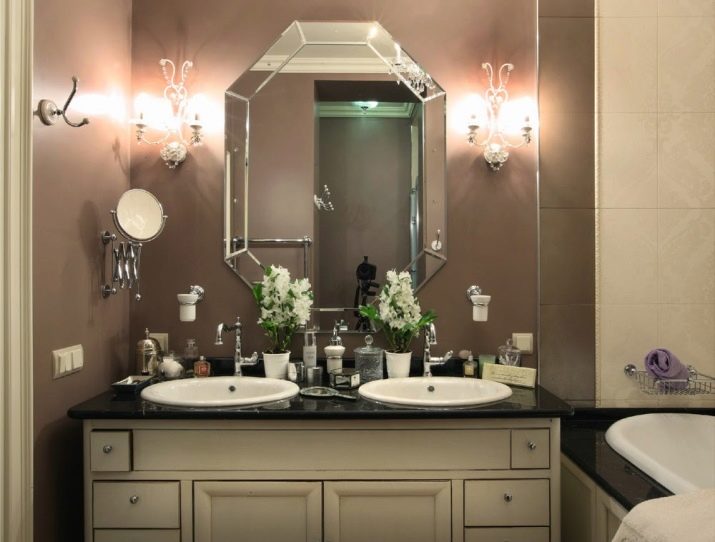
The sconce installation is gaining popularity over the mirror. In this case, to illuminate the working area, variants of horizontal type luminaires with directional light are used. Such a luminous flux does not hit the eyes, from the point of view of user convenience, it is considered the best.
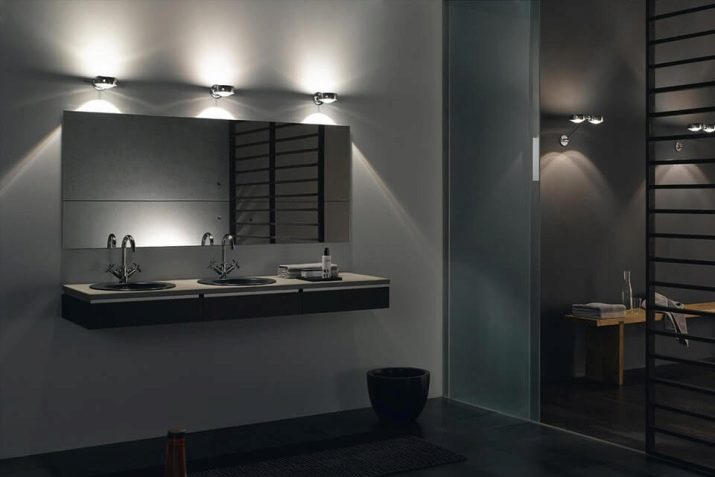
Sconces can be hung on the wall opposite the mirror. However, from the point of view of lighting the working area, this is impractical. In addition to glare being reflected in the mirror, the user can also block the incoming light. The advantage of this placement is the ability to make the room visually spacious.
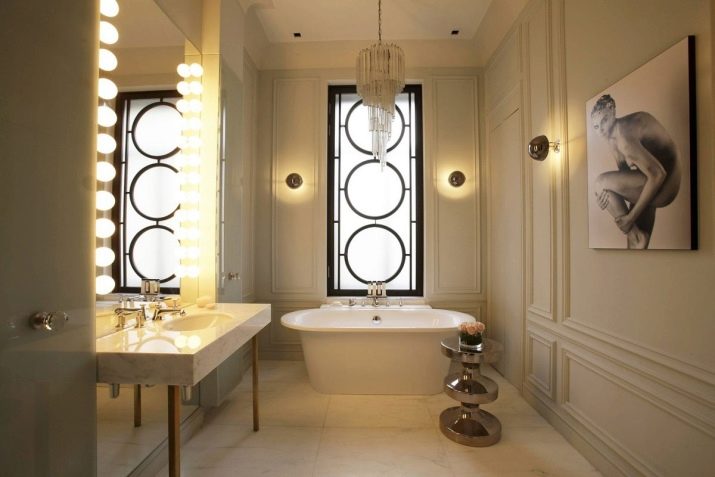
Depending on the complexity of the perspective, sometimes wall lights have non-standard. For example, they can illuminate not only 1 but also 2 mirrors. Moreover, their number can vary from 2 to 4. Sometimes in spacious bathrooms, sconces highlight the space near the bathtub. Separate projects include the placement of sconces on two adjacent walls.
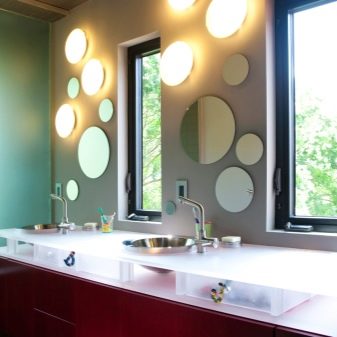
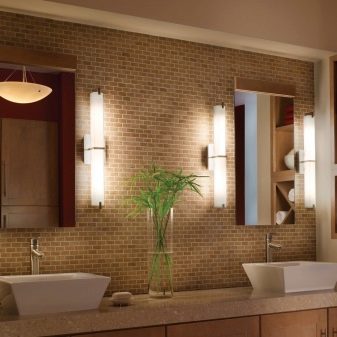
Optionally, fixtures can decorate the space near the wall cabinets or open shelves.
Also a lamp can accentuate an existing ledge. Paired models on the protrusions on both sides of the room can be elements of the bathroom zoning, indicating the entrance to a separate functional area (for example, delimiting the wash zone and the mirror).
How to choose?
When buying a sconce for a particular bathroom, you need to pay attention to a number of factors. The key ones will be dust and moisture protection class, as well as the material of manufacture. Models with textile shades look beautiful in the pictures of designers, but in practice they are not suitable for purchase.You need to take those products that will not rot, decompose and deteriorate from contact with moisture and fumes, characteristic of plumbing units.
In addition, you need to pay attention to the central lamp. Sconces should form a single lighting ensemble with it. This should be seen in the forms, color scheme and finish. As for the size, it all depends on the area of a particular bathroom. The smaller it is, the simpler and smaller the sconces themselves should be.
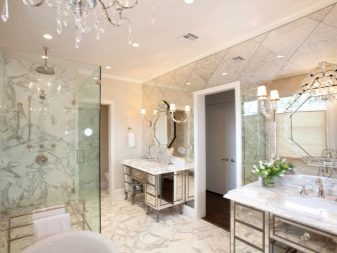
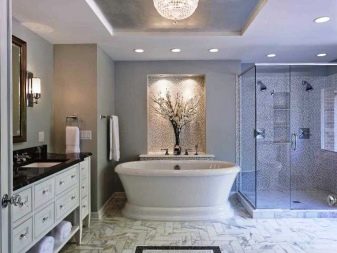
Examples in the interior
We offer several examples of a harmonious choice of sconces for the bathroom.
Sconce with directional light in the form of lamps - Stylish accent zone mirrors.
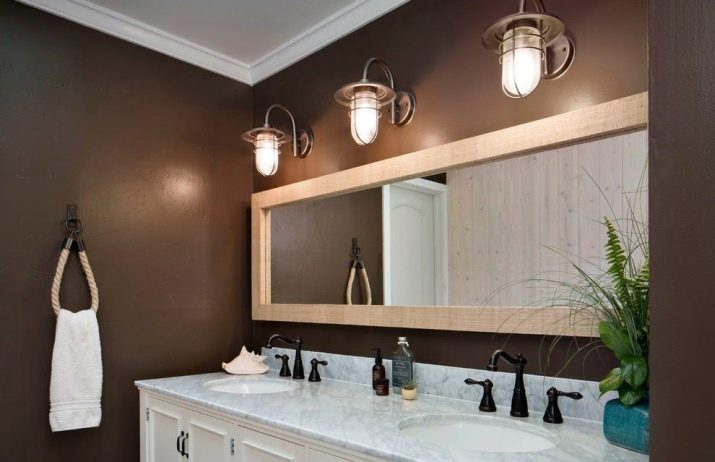
Illumination of the wash zone with vertical wall lamps with a simple design.
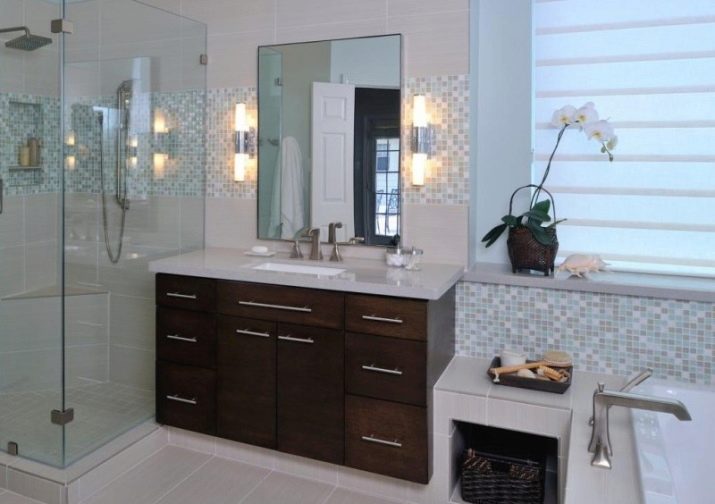
The choice of horizontal sconces for symmetrical illumination of small mirrors.
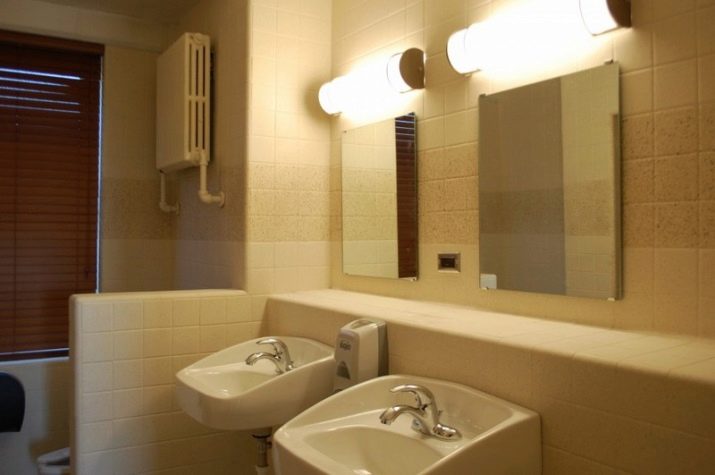
Symmetrical arrangement of sconces with openwork forging elements on two opposite walls.
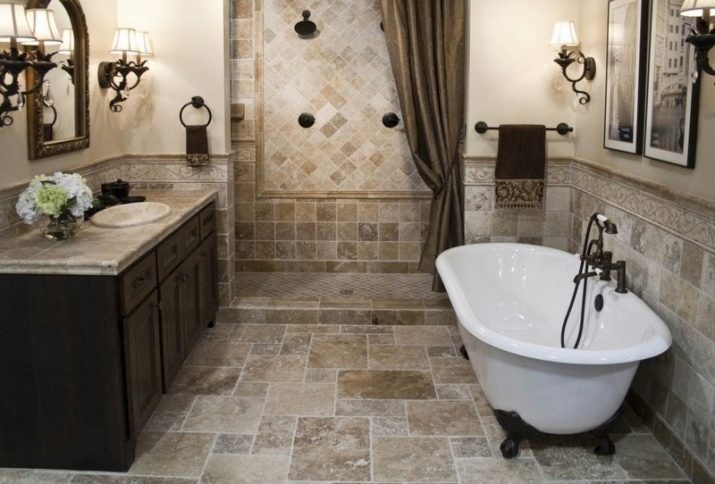
Luminaire with three shades on one arm, illuminating mirror on top.
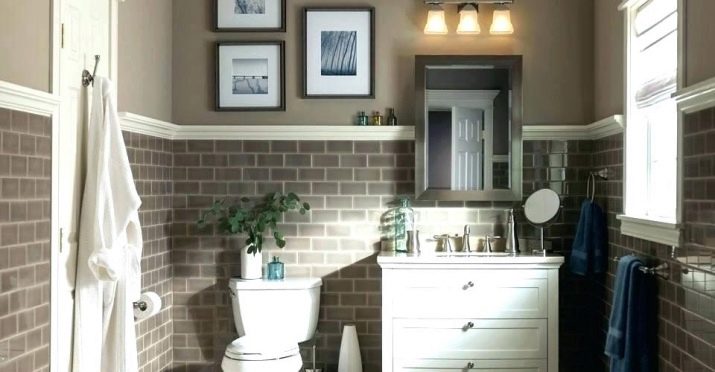
Old-style interior with spherical wall lights.

Local illumination of a mirror zone by means of a sconce with vertical arrangement.
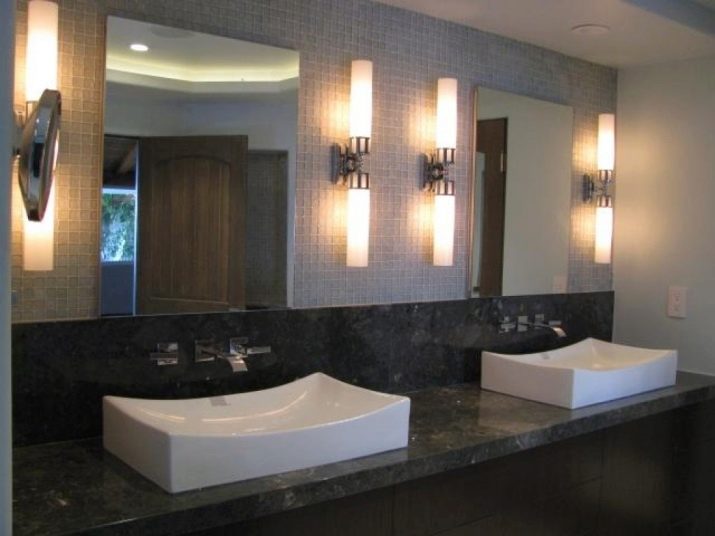
Original options for lighting the mirror.
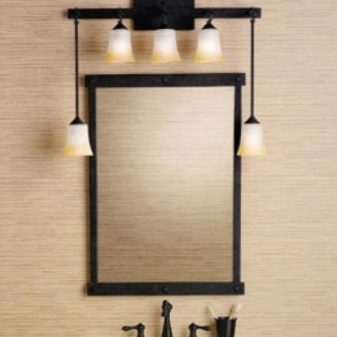

Creating an atmosphere of a certain era with the help of indoor luminaires with retrodesign.
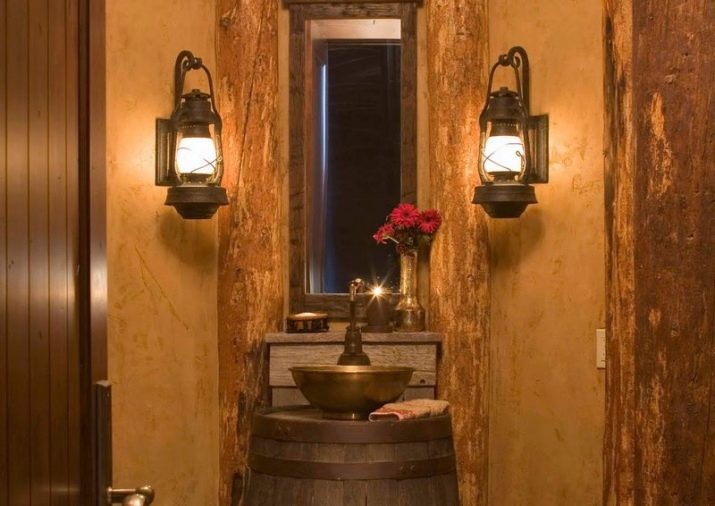
The following video will tell you what you need to know when choosing a sconce or fixture in the bathroom.
